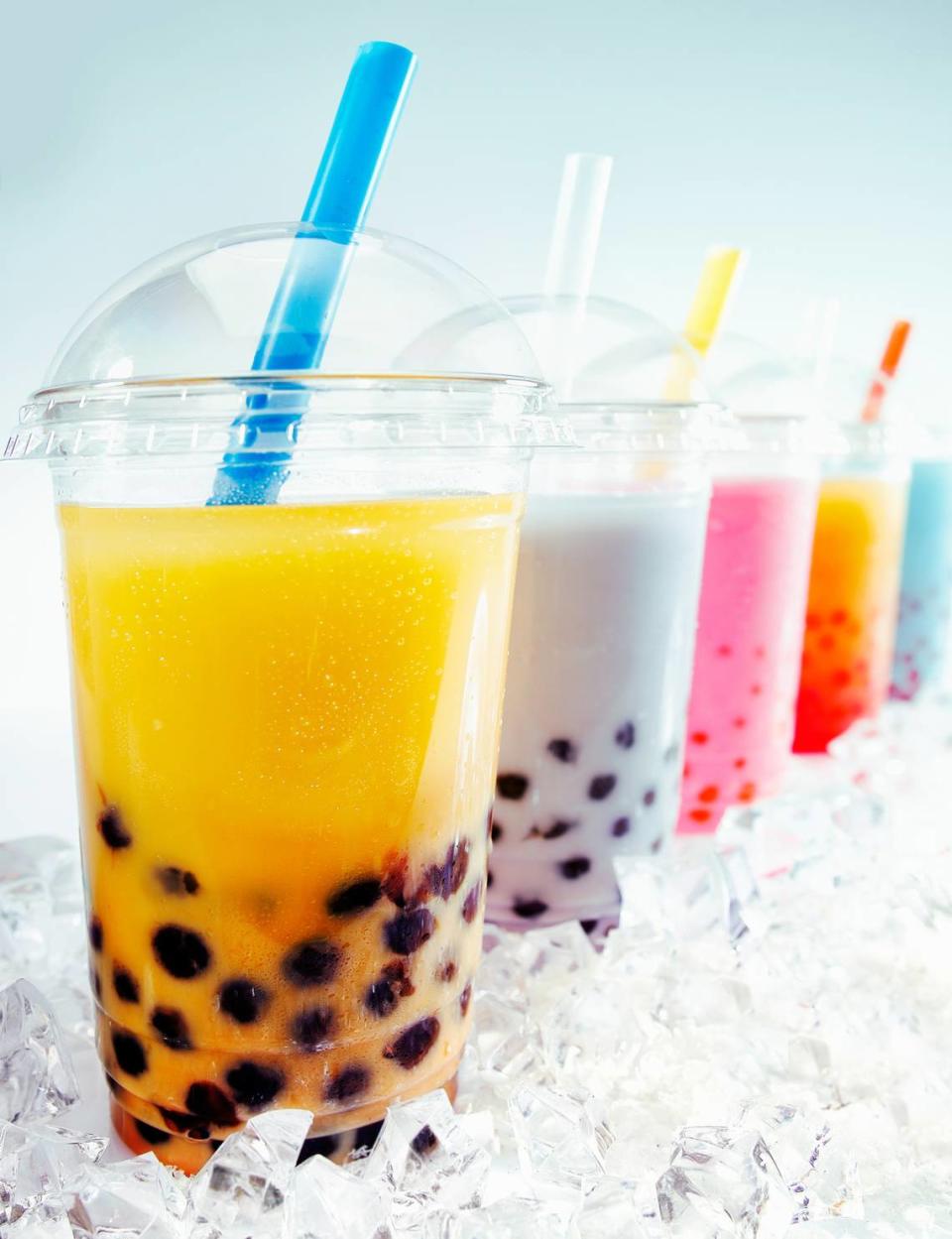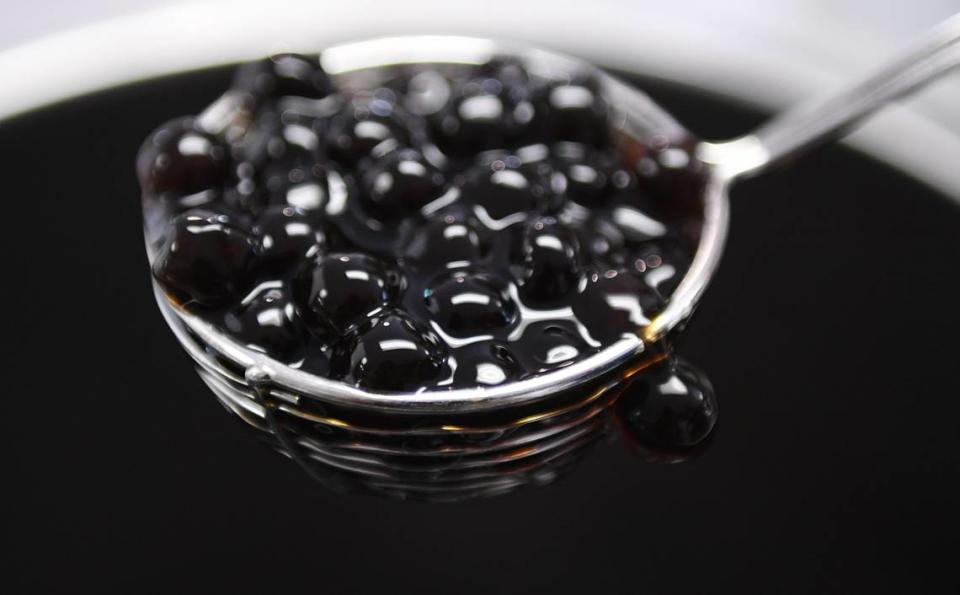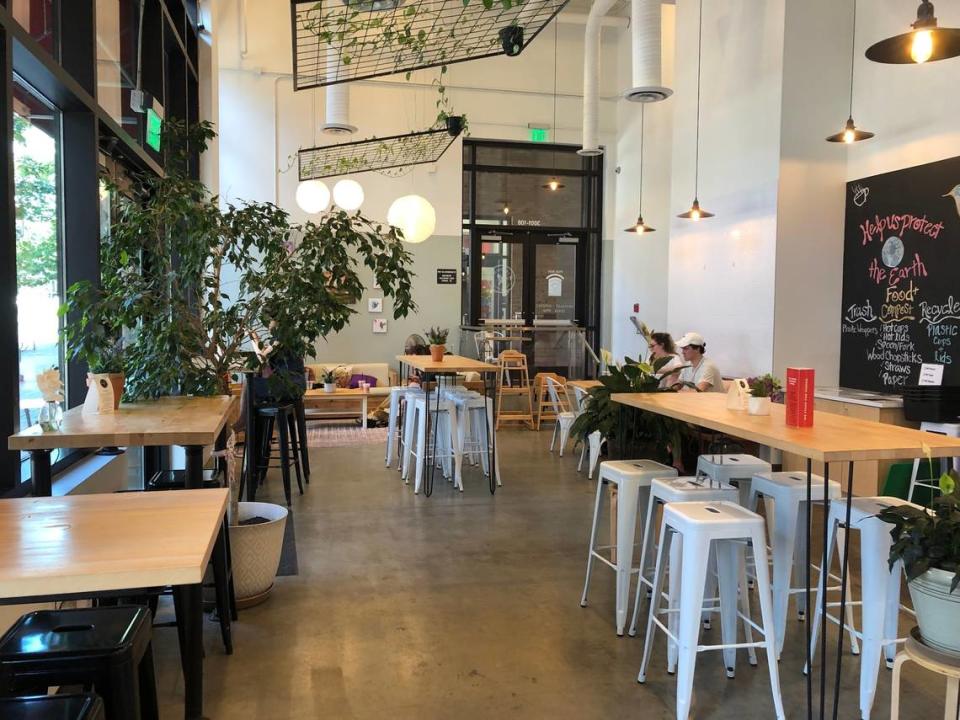Boba tea’s popularity is on the rise. But a boba shortage means shops struggle to keep up
Throughout the pandemic, there have been shortages of a multitude of consumer products in the United States: diapers, computer chips, lumber, chicken wings and cooking oil.
Add boba to that list — the little tapioca balls that are sometimes found at the bottom of Asian teas.
Boba has been in short supply for several months, forcing companies that generally order products from Asia to turn to suppliers in the United States. Small businesses have been hit particularly hard by the shortages, and like many others, have learned new ways to be flexible.
Andy Adkisson, president and co-founder of Cha House in Raleigh, put in an order for boba in late 2020. When the shipment finally arrived in June, it came at just the moment he needed it.
“This is no exaggeration,” he said. “We were literally down to our last box of boba when our supply arrived.
“I feel blessed. Somehow we survived,” Adkisson said.
Boba, or bubble tea, is a tea with a topping made of tapioca that is ground and then formed into balls. It is served in a cold tea with a large straw to allow the boba to be slurped up. Boba can be chewy, or it can pop in your mouth with a burst of sugary flavor, such as strawberry, leechee or chocolate.
The origins of boba tea are frequently traced back to the 1980s, when it quickly became a Taiwanese classic. It came to the U.S. in the 1990s, and has steadily grown in popularity since the 2000s.
The global market is expected to reach $3.4 billion by 2027, from $2 billion in 2020, according to a 2020 report from Allied Market Research. Even larger chain restaurants are picking up on the trend, including Sonic and Dunkin’.
The supplies required to make boba tea are frequently shipped from Taiwan. Due to labor shortages and shipping delays on the West Coast, many companies have switched to American sources for their ingredients, but those American suppliers also are struggling to keep up with the demand.
The result is American boba shops struggling to keep up with the competition — and stay in business.

A need for flexibilty
Adkisson, who owns three locations of Cha House in Raleigh, Cary and Chapel Hill, said he orders supplies from Taiwan.
“We ordered our last shipment, I think late last year, and we didn’t receive it until I think a week or two ago,” Adkisson said. “So, I’ve got a good amount of boba in my garage right now, so no room for the cars. We had to move on to Plan B, Plan C. The problem was everyone in this industry is doing the exact same thing as us.”
Companies who have ordered boba from the United States have been no exception to the shortage rule, said Tom Lam, the owner of Bumble Tea, located near North Carolina State University.
“It’s been very difficult to try and keep up with the boba shortage,” Lam said. “Not only can we not get materials, raw ingredients to make the drinks, but the price is also very competitive in the sense that it’s increasing day by day. We can’t afford to increase our price at our location too much, because it deters customers from coming back in.”
Mounting prices have meant that small businesses have had to operate on slim to non-existent profit margins and are forced to be extremely flexible.
“Our margin is decreasing by the day,” Lam said. “Our profit margin is very tight right now, with costs going up and shipping getting more expensive, and labor getting more expensive. If you cannot get the ingredient, nothing else happens.”
The shortages extend to plastic cups, lids, cooking oil and labor. Flexibility has meant a variety of measures, including limiting the amount of boba put in free drinks, reducing the amount served in customers’ drinks, and switching to more expensive local Asian supermarkets to buy supplies.
“I have to drive all the way to Richmond Virginia, just to get cups, because the local businesses don’t have any cups,” said Lam.
Frozy, a small family-run restaurant in Durham that sells frozen yogurt, boba and smoothies, has switched suppliers to local Asian markets, which are unable to sell boba in bulk.
“We used to have pallets of tapioca delivered, things that people used to purchase in bulk,” saud Ngan Vo, the daughter of Frozy’s founder. “Now they’ve packaged it in smaller packages. So we use those instead, and we make less profit for sure.”

Boba industry in crisis
Some owners, though, see no end in sight.
“It’s not just the single ingredient of boba is in shortage, it’s the entire boba industry is in crisis or shortage,” Lam said.
There are a variety of reasons why shipments of boba tea and other supplies have not made it to the United States. The Suez Canal blockage in April, labor shortages, the pandemic, the political landscape and foreign trade policies have all contributed in some part.
Labor shortages have meant that farmers, trucking companies and docks on the West Coast have not had the workers to harvest, drive and unload boba tea and other consumer products. Vessels that would typically be unloaded within a day of arriving are lining up to wait for days; once they’re unloaded, docks are two busy to ship back empty containers, creating a shortage in Asia.
Shipping prices have also skyrocketed, nearly doubling, according to Bloomberg, and even if they hadn’t, the system is incredibly congested.
“I’m a small business owner, I’m waiting for the product to get where it needs to be so I can order the product and then that product gets delivered, but that’s not happening because all the products are sitting on the vessel and vessels are lined up on the West Coast,” Lam said.

Larger companies are introducing boba
Larger companies, including Dunkin’ Donuts and Sonic are introducing summer additions to their menus that include boba bubbles. Both companies are moving away from the traditional chewy tapioca pearls, in favor of “popping bubbles,” rather than boba.
Their drinks have created a mix of feelings in the industry — many whom are small business owneres — ranging from worry to excitement.
“It’s good in the sense that many more people will know about it,” Vo said. “When we first opened in 2014, a lot of people were like, ‘What is boba tea? Why are you drinking and eating at the same time?’ When other bigger corporations expand on this type of drink it becomes harder for us to compete.”
On the other hand, some companies sees the growing industry as a healthy sign.
“Honestly I value the scene that I’m in, and I want to see it grow. I’d be more concerned if it weren’t growing. Then I’d be a little worried about my own business,” said Adkisson. “I think competition is a healthy thing. I look forward to trying a Dunkin’ Donuts product and Starbucks, and all of them honestly.”
